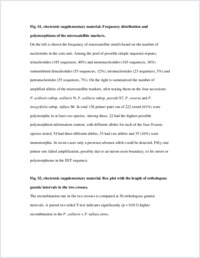High resolution linkage maps of the model organism Petunia reveal substantial synteny decay with the related genome of tomato
- Bossolini, Eligio Institute of Plant Sciences, University of Bern, Switzerland.
- Klahre, Ulrich Institute of Plant Sciences, University of Bern, Switzerland.
- Brandenburg, Anna Institute of Plant Sciences, University of Bern, Switzerland.
- Reinhardt, Didier Department of Biology, University of Fribourg, Switzerland.
- Kuhlemeier, Cris Institute of Plant Sciences, University of Bern, Switzerland.
-
01.04.2011
Published in:
- Genome. - 2011, vol. 54, p. 327-340
English
Two linkage maps were constructed for the model plant Petunia. Mapping populations were obtained by crossing the wild species Petunia axillaris subsp. axillaris with Petunia inflata, and Petunia axillaris subsp. parodii with Petunia exserta. Both maps cover the seven chromosomes of Petunia, and span 970 centimorgans (cM) and 700 cM of the genomes, respectively. In total, 207 markers were mapped. Of these, 28 are multilocus amplified fragment length polymorphism (AFLP) markers and 179 are gene-derived markers. For the first time we report on the development and mapping of 83 Petunia microsatellites. The two maps retain the same marker order, but display significant differences of recombination frequencies at orthologous mapping intervals. A complex pattern of genomic rearrangements was detected with the related genome of tomato (Solanum lycopersicum), indicating that synteny between Petunia and other Solanaceae crops has been considerably disrupted. The newly developed markers will facilitate the genetic characterization of mutants and ecological studies on genetic diversity and speciation within the genus Petunia. The maps will provide a powerful tool to link genetic and genomic information and will be useful to support sequence assembly of the Petunia genome.
- Faculty
- Faculté des sciences et de médecine
- Department
- Département de Biologie
- Language
-
- English
- Classification
- Biological sciences
- License
- License undefined
- Identifiers
-
- RERO DOC 22461
- DOI 10.1139/G10-116
- Persistent URL
- https://folia.unifr.ch/unifr/documents/301863
Other files
Statistics
Document views: 76
File downloads:
- rei_hrl.pdf: 262
- rei_hrl_sm.pdf: 90

